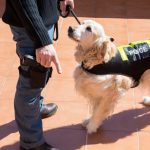Is a Positive Indication by a Sniffer Dog Enough for Police to Search You? Part 2: Applying Empirical Data

In Part 1 of this series, we outlined the law relating to ‘reasonable suspicion’.
To re-cap, the law says that police can only search you for drugs if they have a ‘suspicion on reasonable grounds’ that you have drugs on you at that particular time.
In the leading case of R v Rondo, Justice Smart of the NSWCCA reviewed the previous case law and came to the conclusion that:
1. For a police officer to have a reasonable suspicion to search you, there must be “more than a possibility” that you possess drugs at the time, and the “reason to suspect” drugs must be “more than a reason to consider or look into the possibility of its existence”.
2. “Reasonable suspicion is not arbitrary. Some factual basis for the suspicion must be shown”, and
3. When determining whether there was reasonable suspicion, “regard must be had to the source of the information and its content, seen in the light of the whole of the surrounding circumstances”.
Which begs the question:
Does a positive indication by a ‘drug detection dog’ create “more than a possibility” that drugs are on you?
Here’s the second and final blog:
2. Applying the empirical data about the reliability of sniffer dogs to the legal requirements for a valid search.
A. What is the empirical data on the reliability of drug detection dogs?
(i) Background
The use of drug detection dogs in NSW commenced in early 1999, when 14 dogs were trained for use during the 2000 Sydney Olympic Games.
The dogs were re-assigned to police local area commands in early 2001, and used in concentrated areas of drug use such as night clubs and train stations.
In November of that year, the case of a man found in possession of drugs was thrown out of court on the basis that the sniffer dog had placed its nose on the man’s pocket, which constituted an assault.
That decision was overturned on Appeal, when it was found that a “positive indication” by a drug sniffer dogs does not constitute a “search”.
To clarify the situation, the NSW government passed the Police Powers (Drug Detection Dogs) Act 2001 (‘the Dogs Act’), which came into effect in February 2002.
The Act made it clear that a the use of a sniffer dog is not a “search”, but merely an “indication” which might form the basis for a search – provided that the common law test of “reasonable suspicion” is met.
The Dogs Act had a built-in review provision, whereby the Ombudsman would evaluate it’s effectiveness after 2 years.
(ii) The Ombudsman’s review
In June 2006, NSW Ombudsman Bruce Barbour released his eagerly awaited “Review of the Police Powers (Drug Detection Dogs) Act 2001”.
That document examined 470 drug dog operations over two years, the majority occurring in greater Sydney.
Its findings were highly critical of the use of drug detection dogs.
The review found that prohibited drugs were located in only 26 per cent of the recorded positive indications by drug dogs.
And of the 10,211 positive indications made, there were only 19 successful prosecutions for drug supply – which represented 0.19 per cent of those searched.
Barbour concluded that: “the use of drug detection dogs has proven to be an ineffective tool for detecting drug dealers”.
His findings were a significant blow to the primary justification for the use of sniffer dogs – which was to detect and prosecute those engaged in drug supply.
On the pertinent question of whether a positive indication supplies the reasonable suspicion for a police search, the report concluded that:
“Given the low rate of detecting drug offences following a drug detection dog indication, it is our view, supported by Senior Counsel’s advice, that it is not sufficient for a police officer to form a reasonable suspicion that a person is in possession or control of a prohibited drug solely on this basis” (at page 3).
Barbour went on to state that:
“We have recommended that NSW Police develop guidelines which outline the factors that, in addition to a drug detection dog indication, may be considered by a police officer when forming a reasonable suspicion to lawfully stop, search and detain a person.
In addition, we have recommended that these guidelines be discussed at briefings before operations, and that officers systematically record the factors that led to the formation of reasonable suspicion.
We have also recommended the removal of advice contained in current guidelines that police officers have reasonable suspicion to search a person based solely on a drug detection dog indication” (at page 4).
(iii) The rate of detection since the Ombudsman’s report
Despite Mr Barbour’s finding that drug detection dogs are ineffective, the number of searches performed after positive indications has nearly doubled since the date of his review.
In terms of the rate of detection, government figures obtained in parliament by Greens MP David Shoebridge show that only around one-third of positive indications lead to drugs being found:
2007
Searches after positive indications: 7,603
Drugs found: 2,435
Percentage: 32%
2008
Searches after positive indications: 10,562
Drugs found: 3,748
Percentage: 35%
2009
Searches after positive indications: 17,321
Drugs found: 5,109
Percentage: 29%
2010
Searches after positive indications: 15,779
Drugs found: 5,087
Percentage: 32%
2011
Searches after positive indications: 18,281
Drugs found: 5,031
Percentage: 28%
2012
Searches after positive indications: 16,184
Drugs found: 5,280
Percentage: 33%
2013
Searches after positive indications: 17,746
Drugs found: 6,415
Percentage: 36%
2007 – 2013
Searches: 103,476
Drugs found: 33,105
Accuracy: 32%
B. Does this level of reliability meet the legal test?
Bearing in mind that under the law, drug detection dogs can only be used without a warrant in areas where there is a typically high concentration of drug use eg clubs, bars, dance parties, train stations etc – and given that police operations tend to focus on areas where the concentration is highest (eg music festivals and selected stations eg Redfern and Kings Cross) – the figure of less than one-third of positive indications leading to drugs being found is alarmingly low.
One might even suggest that, at some venues such as music festivals, the overall rate of drug use might not be much lower than this figure; and that randomly subjecting one-in-three people to searches might produce similar results.
That argument is supported to an extent by studies into the ‘normalisation of drug use among young people’; one of which collected data from the ‘Big Day Out’ music festival over a 4 year period between 2006 and 2009, finding that more than half of the respondents surveyed use illicit drugs.
To give a recent example of the concentration of searches, a staggering 830 people were searched during the recent Stereosonic Music Festival in Sydney alone, leading to only 196 drug arrests (24%).
It should also be borne in mind that when drugs are found following a positive indication and a person is charged, the police papers will almost invariably contain further ‘facts’ upon which the ‘reasonable suspicion’ was based eg that they attempted to avoid police by walking away, were acting nervously when approached etc – which one might think would increase the likelihood that a positive indication would lead to the location of drugs.
This is the context within which the empirical data should be considered, and the legal test should be applied, to the stated case ie where:
A drug detection dog gives a positive indication in respect of a person who is otherwise acting ‘normally’.
The relevant questions are:
1. Is there “more than a possibility” that the person possesses drugs at that time?
Unfortunately, Justice Smart does not clarify the meaning of “possibility” in his judgment.
According to the Merriam-Webster dictionary, it means “a chance that something might exist, happen or be true”.
There can be no question that drugs “might exist”, or that it may “happen to be true” that the person possesses drugs.
But is there more than this?
Smart J goes on to state that “a reason to suspect that a fact exists”, eg that drugs exist, must be “more than a reason to consider or look into the possibility of its existence”.
According to the data, less than one-third of all people in respect of whom a positive indication has been made are found to be in possession of drugs; which makes it significantly less than an “even chance”, let alone probable or likely, that a positive indication will lead to a finding.
And this is where:
1. Those people are certainly in areas where there is a typically high concentration of drug activity,
2. They are probably in areas where the concentration is at it’s highest, and
3. Police have almost invariably observed (or at least claim to have observed) behaviour that is consistent with drug activity.
Taking all of this into consideration, there appears to be a strong argument that it is not “more than” possible that a positive indication – with nothing further – will lead to a finding of drugs.
In other words, the “reason to suspect” that drugs exist can be seen as no more than “a reason to consider or look into the possibility of its existence”; which does not amount to a ‘suspicion on reasonable grounds’.
If that is accepted, it follows that any search based upon a positive indication alone would not pass the legal test, and would therefore be illegal.
2. Is a search “arbitrary” or has “some factual basis for the suspicion… [been] shown”?
Given the empirical data and what has already been said, it is difficult to see how a search following a positive indication is anything but “arbitrary” – unless there are additional circumstances that cause the “reasonable grounds” threshold to be met.
As such, positive indications by sniffer dogs appear to provide police officers with a practical excuse to arbitrarily search members of the public rather than meeting the legal test.
3. Has “regard… [been] had to the source of the information and its content, seen in the light of the whole of the surrounding circumstances”?
Justice Smart finds that “[w]hat is important is the information in the mind of the police officer stopping the person… at the time he did so”.
But once again, it is difficult to see how an officer could form a suspicion on reasonable grounds if the available information is that:
a) drug sniffer dogs can only be used in areas of high drug concentration,
b) a positive indication by a sniffer dog in such areas has less than a one-third likelihood of finding drugs, and
c) the person who has been stopped exhibits no other indicia of drug activity.
Again, it appears that there would need to be something more for an officer to form the grounds required for a search.
In summary, a positive indication by a drug detection dog would not be sufficient by itself to cause a police officer to form a suspicion on reasonable grounds that a person is in possession of drugs.
Accordingly, any search based upon that indication alone would be unlawful, which means that any evidence derived as a result of the search (eg any drugs found) would be subject to the exclusionary provisions of section 138 of the Evidence Act 1995 (NSW); in other words, the case could be thrown out of court on the basis of illegal search if the undesirability of admitting evidence derived in that way outweighs the desirability of admitting the evidence.
That conclusion is consistent with the Ombudsman’s report which, informed by Senior Counsel, also found that a positive indication by a drug sniffer dog is not enough, by itself, for police to search you.






